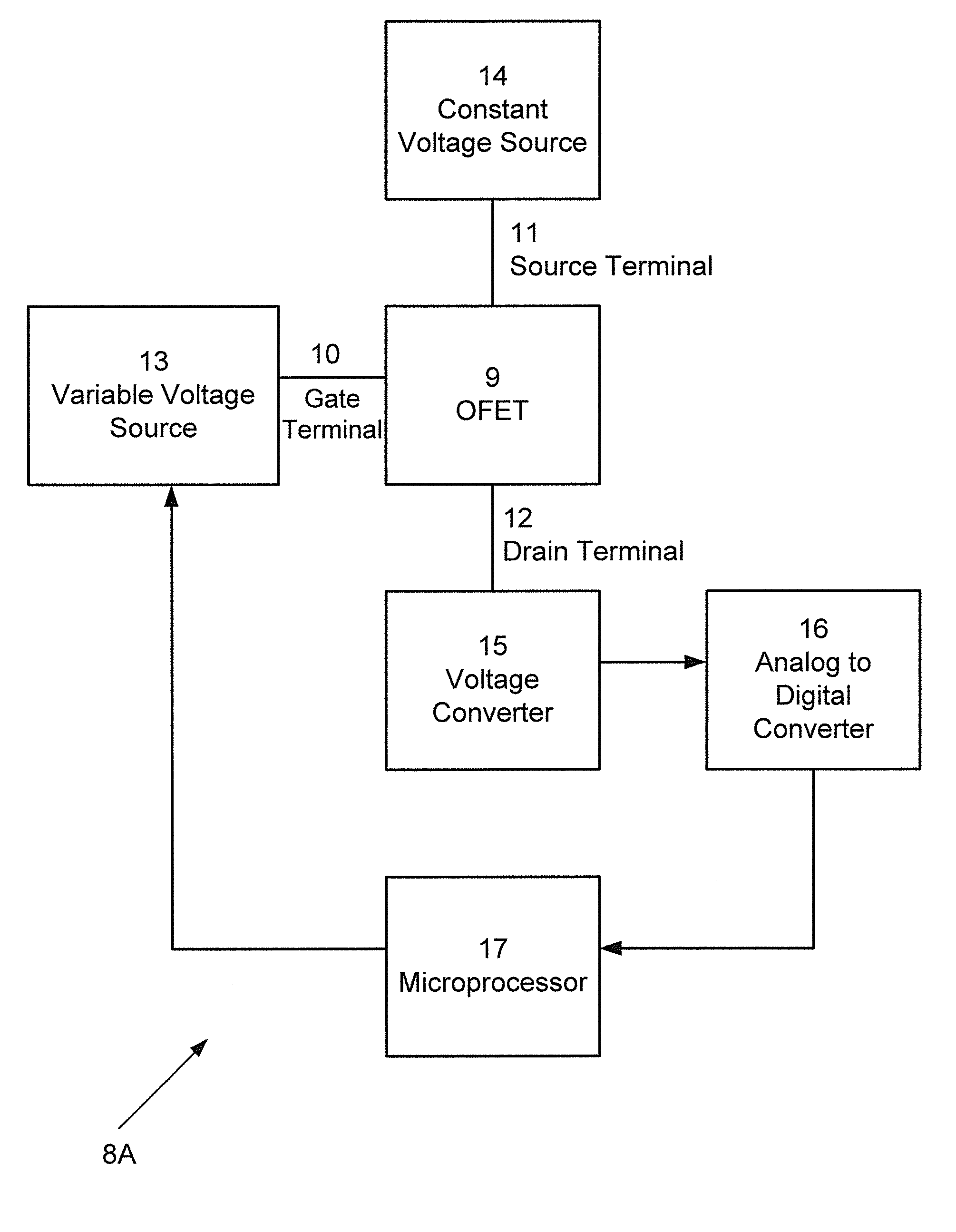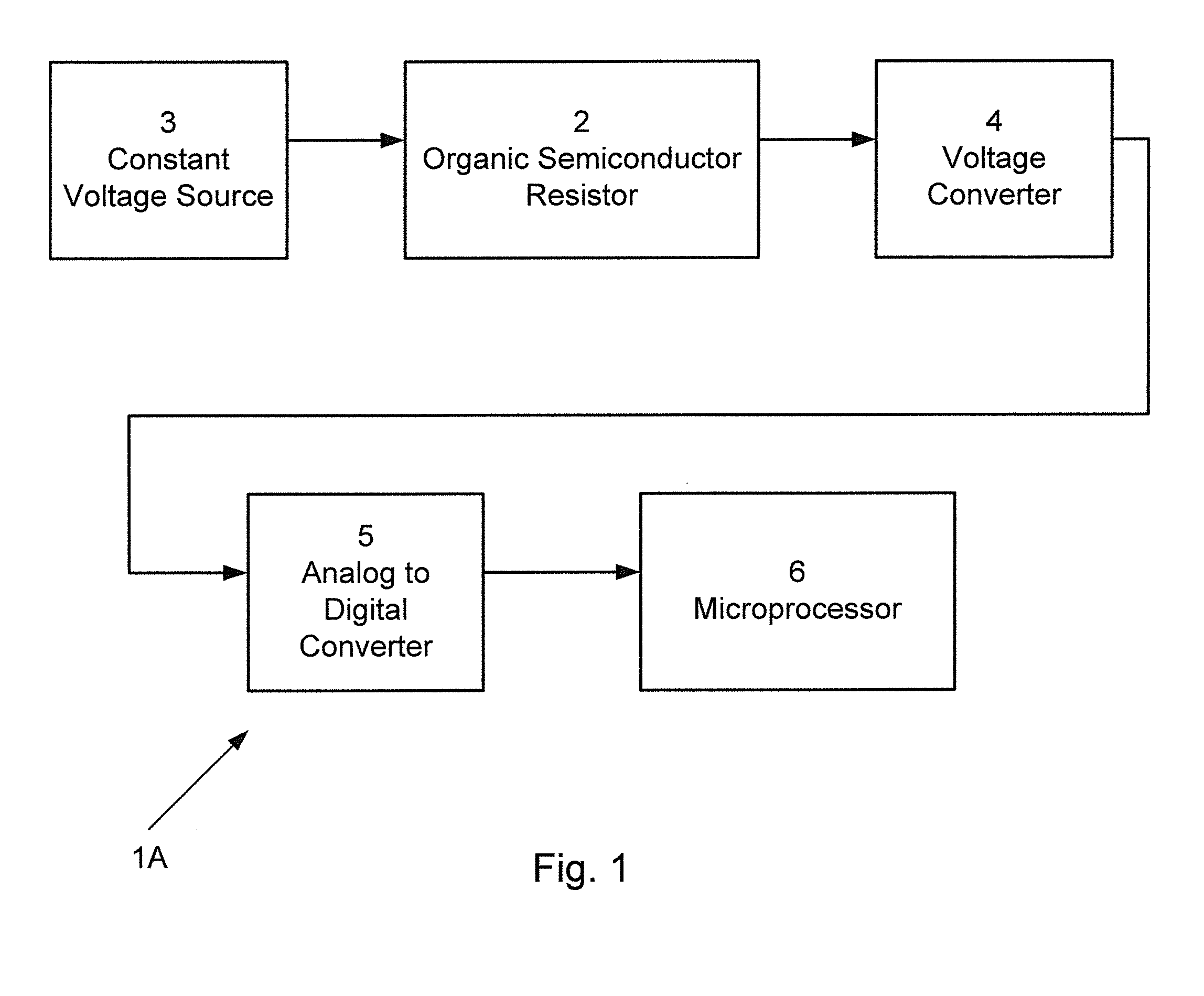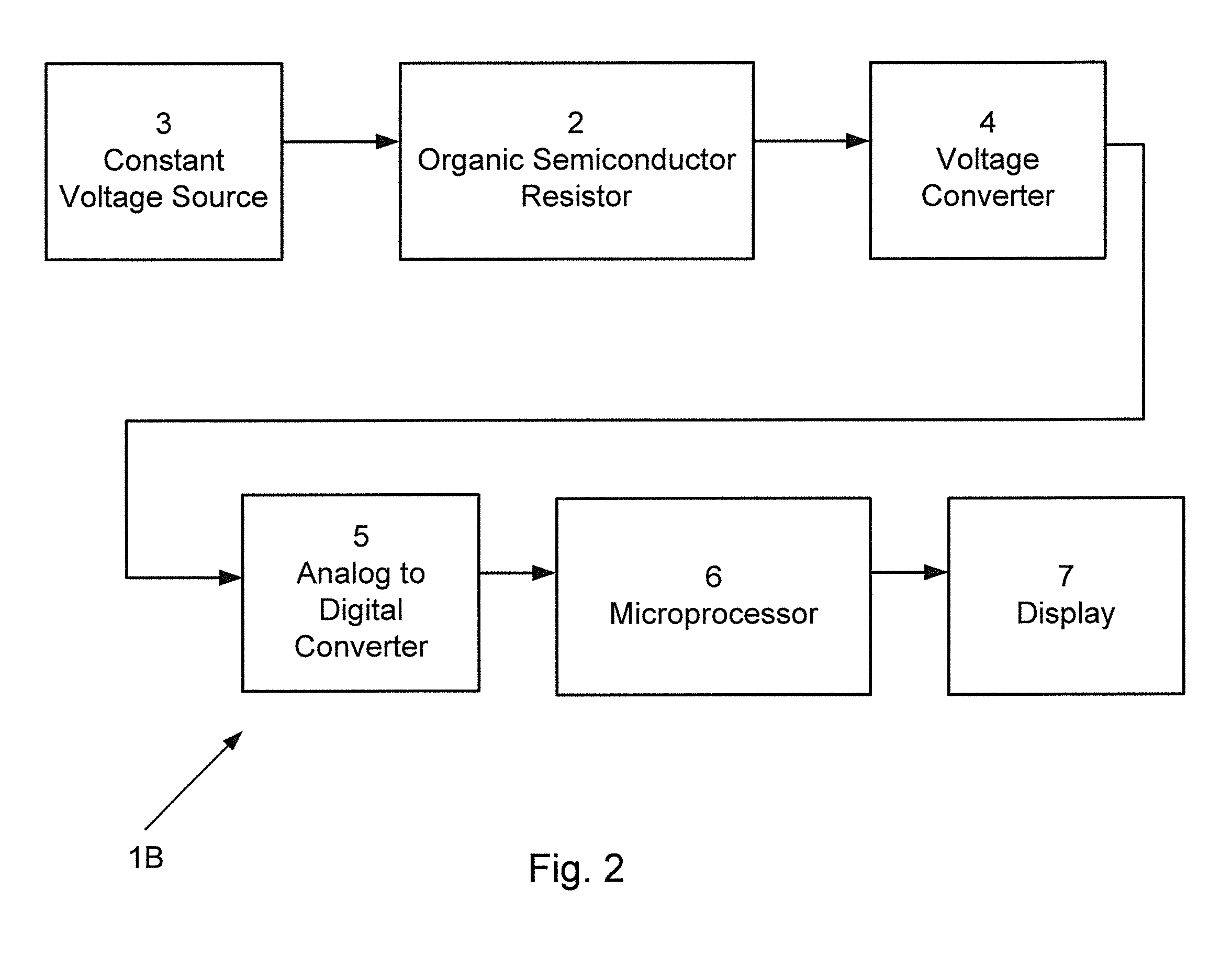Method and device for determining ionizing radiation
a technology of ionizing radiation and ionizing radiation, which is applied in the direction of individual semiconductor device testing, measurement with semiconductor devices, instruments, etc., can solve the problems of high detector cost, bulky badge form for personal dosimetry, and ineffective sense of ionizing radiation
- Summary
- Abstract
- Description
- Claims
- Application Information
AI Technical Summary
Benefits of technology
Problems solved by technology
Method used
Image
Examples
Embodiment Construction
[0016]According to the invention there is provided use of an organic semiconducting material sensor for determining ionizing radiation proportional to the change in resistivity or conductivity of the sensor.
[0017]According to the invention there is also provided a method for determining ionizing radiation comprising the steps of:[0018](i) applying a constant voltage across an organic semiconducting material sensor prior to and after exposure of the sensor to the ionizing radiation;[0019](ii) measuring and converting the current passing through the sensor proportional to the conductivity or resistivity of the sensor which in turn is proportional to the ionizing radiation in the sensor, into a proportional analog voltage value; and if desired converting the analog voltage value into digital value; and[0020](iii) comparing the analog / digital values obtained prior to and after exposure of the sensor to the ionizing radiation and computing the ionizing radiation based on the change in th...
PUM
 Login to View More
Login to View More Abstract
Description
Claims
Application Information
 Login to View More
Login to View More - R&D
- Intellectual Property
- Life Sciences
- Materials
- Tech Scout
- Unparalleled Data Quality
- Higher Quality Content
- 60% Fewer Hallucinations
Browse by: Latest US Patents, China's latest patents, Technical Efficacy Thesaurus, Application Domain, Technology Topic, Popular Technical Reports.
© 2025 PatSnap. All rights reserved.Legal|Privacy policy|Modern Slavery Act Transparency Statement|Sitemap|About US| Contact US: help@patsnap.com



